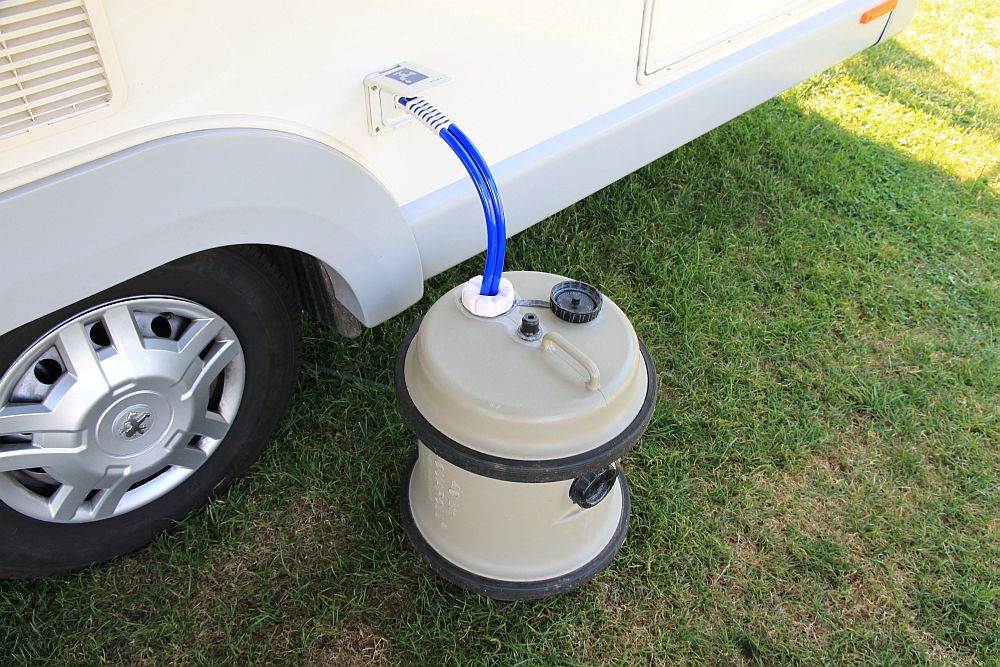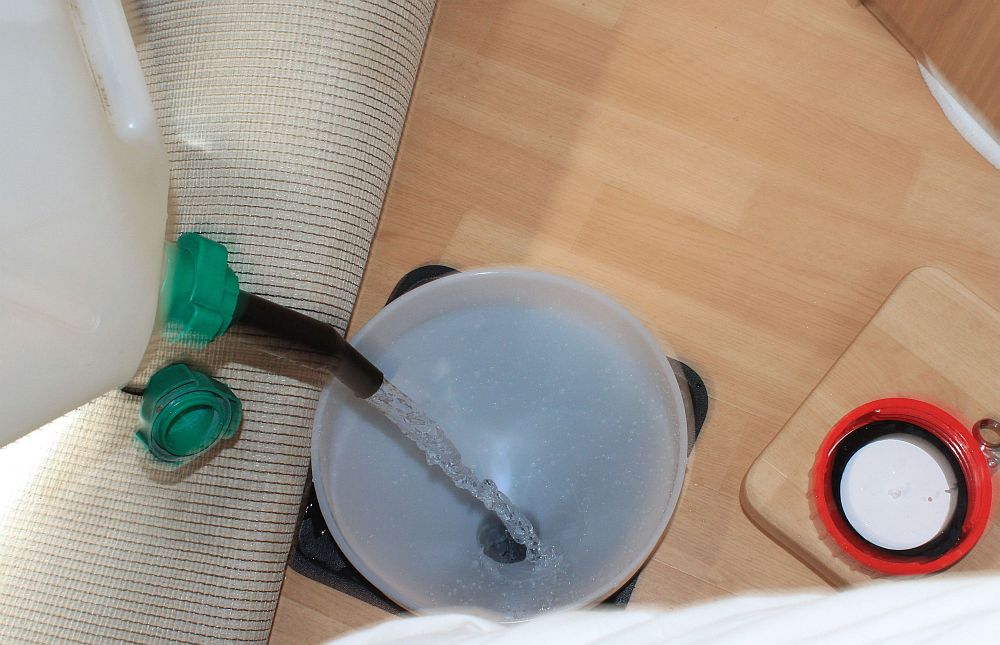Water carriers
We have joined the world of owning a Motorhome (as novices) (only done 3 nights in it so far), I would like to know what to store water in and where. Our van is a compact version (Compass Sunseeker 100), if we are parked up for the night with electric hook
up we do fill up the tank when we arrive but when not connected to water, once the tank is empty, any suggestions how or what to use for water storage. It would seem we can only fill water using the pump hose? Any advice would be useful.
Comments
-
We leave home with enough water for drinks and toilet flushing during the journey in the tank. On arrival at site we fill the tank up. This lasts around a day as our tank is only 70 ltrs. If we go out in the van we dump waste and refill the tank on return.
If we dont go out we refill the fresh water using a 2 gallon water carrier and the vans external pump and dump the grey waste using a small Fiamma grey waste container. Sometimes it is easier to fill using the container, sometimes its easier to just move the
van, depending on how close the tap is to our pitch really.0 -
My MWB Fiat has built in Waste & fresh water tanks of circa 16 gallons. I Travel to first site with half-full fresh water and top up at m/h service point on arrival. If i'm going off site I empty grey & fill fresh
as I pass the MSP which might be coming or going of course.If I'm not intending to tour locally I use a big red 2.5 gallon watering can for fresh as and when required and just 'up-sticks' and head for the MSP every three or four days to dump grey waste.
0 -
We used a 25l water container with a tap which we empty into the fresh water tank from inside the van. We're now back to use a food grade hose split into two sections, one 5m and the other 10m filling through the external water point. Some people use a watering can. A coke bottle or similar, with a hole cut into one side, makes a decent funnel into which we pour water from a smallish container into the external water point.
0 -
This is what we use, see picture below if the connection is the same. I have found it a practical solution to replenishing the main water tank when staying on site for more than a couple of days. We tend to use our own facilities so I usually fill the Aquaroll once a day. It sits in the shower when we are travelling.
David
 0
0 -
Thanks to you all for the advice. We are now thinking of getting a fiamma 23Ltr carrier and use that with a submercible whale to pump in water when not close to tap to use the normal pump. until we get to be more proficient, we intend looking for sites with
water hookup.0 -
As you gain familiarity with vanning you may find yourselves rather less thrifty with water than a 23litre carrier allows. Why not consider David K's solution with a 40 litre carrier and a submersible pump with a long hose which you poke into your regular filling point. The pump is powered via a simple 12v socket fitted near the water filler. David's picture shows an even more sophisticated system, with the pump connected to a plumbed in filler - but he's a seasoned vanner
0 -
Being also a newby I have a 40 litre Aquaroll the same as David and purchased the whale submersible pump. I have not tried it yet but realised I needed something different when I ran out of water and was too far from the mains water to refill with a hose. Having the awning attached I was in a bit of a pickle and left a day early.I didnt realise there is access to the water tank from inside the motorhome so perhaps I need to find that as well.
0 -
Neil
When we got our motorhome we were determined that we wouldn't use the aquaroll as that seemed very, un motorhome like, and used a 10 lt container to fill the tank via access inside the van like this

We soon realised that we were being a bit silly (water would splash everywhere) and decided to revert to the Aquaroll we used with the caravan and have been using it ever since. If I had a van with a non-pumped water filler I would just use a watering can
to top up but we have what we have and its a system that works surprisingly well especially if you are on site for longer than your usual tank full of water will last.David
0 -
We are new to Motorhome’s as well and have just 3 holidays under our belt so far. After many years of caravans with a twin aqua roll set up; our motor home has a 120L inboard tank, based on experience with the vans we have owned should last a good 4 to 5
days.We have a 6 Litre watering can, I start to use this every time I visit the loo or shower block or go for a paper and have never run out so far.
I must admit with the amount of water available we have found we are not quite as frugal with water as we once were probably not a good habit really.
We use a mix of site facilities and our own on board, I don’t bother leaving water in the 100Litre waste tank, I use the waste hog from the caravan and put under the tank with the tap open. That way we are empty and ready to go rather than having to manoeuvre
over a waste point or even queue to use one just our preference.(It is actually increased use of the waste hog that made me realise we are using more water in the motor home than the caravan rather than observing us using more water)
I have the aqua rolls in the loft and have already looked into using one with a submersible pump to transfer to my holding tank but to be honest I think that would just encourage us to use even more water. You can save a lot of water by not letting it flow
all the time. A habit we have already lost to a point but we will sort that out for the future and get back to less wasteful habits.0